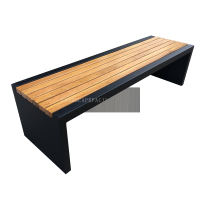Welcome to the website for landscape facilities products and knowledge.
How does the table’s design address potential issues like splintering in wood components?
Quality table design proactively addresses wood splintering through multiple strategic approaches that begin long before assembly. The selection of properly seasoned, stable wood forms the foundation, as designers prioritize quarter-sawn lumber and species with tight grain patterns that naturally resist splitting. Modern manufacturing techniques further enhance this through precision cutting methods that eliminate rough edges where splinters typically originate.
Joinery represents another critical defense mechanism against splintering. Techniques like mortise-and-tenon joints, doweling, and biscuit joining distribute stress evenly across connections, preventing the concentrated pressure points that cause wood fibers to separate. Additionally, rounded edges and carefully beveled corners significantly reduce impact vulnerability—common initiation points for splinters in daily use.
Protective finishes serve as the final barrier, with multiple coats of polyurethane, lacquer, or penetrating oils sealing the wood surface against moisture absorption that leads to swelling and subsequent splintering. These finishes also bond surface fibers together while allowing for natural wood movement with seasonal humidity changes. Beyond surface treatment, underlying structural elements like adequate apron support and proper fastening techniques ensure the table maintains integrity under load, preventing the flexing and shifting that creates splinter-prone weak points. Through this comprehensive design philosophy, furniture makers create tables that remain splinter-free while enduring decades of regular use.
Related search:

Recommendation
Modern Stainless Steel Begonia Wood Park Chair Outdoor Courtyard Leisure Sun Protection Bench Long Seat